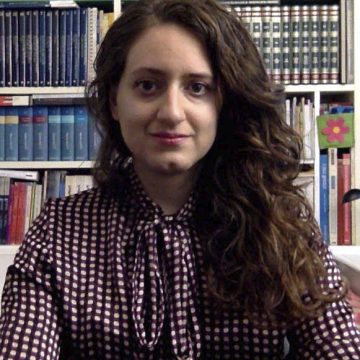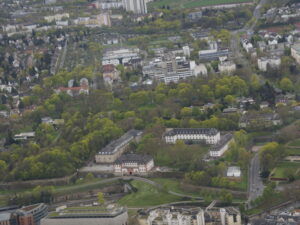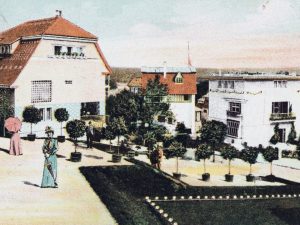The emerging BIM methodology and the exchange data format IFC are changing the way of collaboration, visualisation and documentation in 3D models for planning, construction and faculty management processes. The introduction and development of the Semantic Web, spreading the idea of structured, formalised and linked data, offers semantically enriched human- and machine-readable data.
In contrast to civil engineering (BIM/IFC) and cultural heritage (CIDOC CRM), academic object-oriented disciplines, like archaeology, art and architecture history, are acting as outside spectators. Since the 1990s, however, it has been argued that a 3D model is not likely to be considered a scientific reconstruction unless it is grounded on accurate documentation and visualisation.
Thus, there have been many calls for an approved e‑documentation related to 3D reconstruction projects, but these standards are still missing and the validation of the outcomes is not fulfilled. Meanwhile, the digital research data remain ephemeral and the 3D reconstruction projects continue to fill the growing digital cemeteries.

Evolution and relationships between terms used in the field of hypothetical 3D digital reconstructions for cultural heritage between 1989 and 2019. The categories in which they have been grouped to follow the development of their definitions are: virtual archaeology, visualisation, documentation, authenticity, uncertainty, cultural heritage.
Evolution and relationships between terms used in the field of hypothetical 3D digital reconstructions for cultural heritage between 1989 and 2019. The categories in which they have been grouped to follow the development of their definitions are: virtual archaeology, visualisation, documentation, authenticity, uncertainty, cultural heritage.
The dissertation by Irene Cazzaro focuses, in this context, on uncertainty classification and visualisation for source-based 3D reconstructions in the domain of archaeology, art and architecture history. The application of an uncertainty scale to these models is in fact of vital importance in order to declare to which extent the collected documents allow an accurate reconstruction.
The main questions that are taken into consideration are:
- How can we express the degree of uncertainty in the visualisation of the (human- and machine-readable) data model?
- What kind of features of an online 3D viewer – to be integrated in a collaborative web-based virtual research environment (VRE) – are necessary to document and represent uncertainty in hypothetical reconstructions?
These are interrelated questions that lead, first of all, to the exploration of the attempts to define a series of standards for 3D models, from the Nara document (1994) to the London Charter (2006) and the Principles of Seville for archaeological 3D reconstructions (2011).
The work initially focuses on terminology (highlighting the importance of uniformity in the use of terms that should be clearly defined to become a standard inside a community) and on the definition of a workflow especially related to uncertainty representation in hypothetical 3D digital reconstructions. The workflow is then applied to a series of models – obtained with different software and exported in different formats – with the aim of publishing them in a scientific repository and testing to which extent information about uncertainty is preserved: this may be visualised through an integrated web-based 3D viewer and/or documented in the form of metadata.
In the end, this process will lead to a validation or a correction of the initial assumptions on which the proposed workflow is based, but also to a better definition of the levels of uncertainty – from terminology to categorisation and visualisation.

External and internal view of the digital 3D model of the medieval synagogue in Speyer in 1250. An uncertainty scale has been applied directly to the model, in order to declare to which extent the collected documents allow an accurate reconstruction.
External and internal view of the digital 3D model of the medieval synagogue in Speyer in 1250. An uncertainty scale has been applied directly to the model, in order to declare to which extent the collected documents allow an accurate reconstruction.
Betreuer
Prof. Fabrizio Ivan Apollonio – Dipartimento di Architettura, Università di Bologna & Prof. Dr.-Ing. Piotr Kuroczyński – Architekturinstitut der Hochschule Mainz
Laufzeit des Projekts
November 2019 – October 2022

















